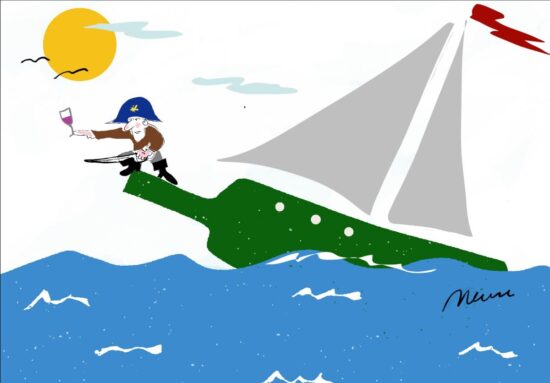
How did particular wines take the shape they did? Some say that the possibilities are necessarily limited by the various atmospheric conditions, soil types and topographies that obtain in the vineyards from which they spring. This is plausible — but only to a point.
It’s true that each these environmental factors plays a role in determining the character of the raw material, the fruit that is the basis of all winemaking. But given that, there’s almost no end to the other elements that can come into play.
I was recently reminded of this reading about the history of Nerello Mascalese in Sicily, a variety that failed to generate commercial interest until it was discovered that it could be shipped over lengthy sea routes without losing savor or strength. One wine broker from the 18th century whose notebooks have come down to us expressed his satisfaction along these lines by remarking that he found the Nerello he purchased in Sicily “navigable.”
As a good traveller, it found favor with the shippers and brokers who blended wine for sale to retail customers. This, in turn, had a material affect on what consumers of that era came to expect from wine — altering to some degree what they considered proper wine to be, and eventually helping establish new consensus norms.
The point of all this is to remind ourselves that, in many cases, wines owe their shape and character not to some visionary vintner artiste or genius monk, but to a series of rather banal considerations. Historically, navigability is one of these, but there are many more.
You may wonder, for example, about why one village appellation in Burgundy requires one year of cellar maturation and another only six months, only to learn that in the latter the water table is higher and so cellars cannot be so deep as in the former. Why does this matter? Because shallower cellars may not offer enough room for two vintages worth of wine to be stored before sale, and the appellation authorities have taken this fact into consideration when drawing the rules. Is the wine different on account of this? Certainly.
Question a winemaker, as we often do, about why there is, say, a little Merlot (untypical of the region) mixed in with her Sangiovese, and you might expect to hear a lengthy discourse on why she thinks it confers a certain nuance. What you actually learn is that she inherited a plot of Merlot her grandfather planted and that something has to be done with it, so it’s thrown in. All perfectly legal. All perfectly practical, too. Admirable, even.
One could go on, but we trust you get the idea. The character of wine has multiple sources, among them ambient growing conditions, historic craft practice, economic and operational considerations, technical innovation (think here of the invention of distillation without which we would have neither Port nor Sherry nor many Vermouths), and, of course, the vagaries of fashion.
Hey, you on the lower deck! Don’t you know enough to close the porthole in a sea like this?